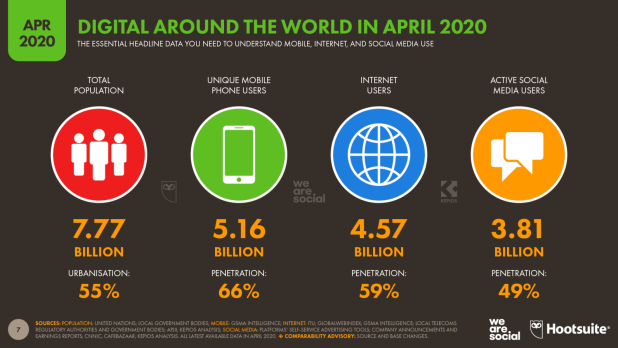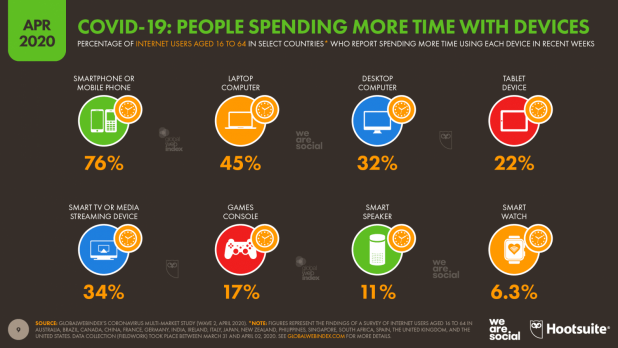The ongoing Covid-19 global pandemic has directly impacted the lives of virtually everyone in the world. As stricter measures are undertaken to counter the transmission and spread of the coronavirus outbreak, not only businesses, but entertainment, shopping and even social events are being held online. Panlingual localization is the process through which website translation encompasses as many languages as possible. This globalization process must also focus on the website content and localization as part of the actual translation services, in order to attract a wider audience while not alienating any of the expanded targets demographic.
Effectively, whether you are marketing products or services, or working to become a more competitive influencer online, you now have more competition than ever before. However, with so many more people online, you also have more opportunity than ever before. The principles of successful internet marketing remain much the same, but the rules of the game have changed.
An April 2020 report on the Next Web website provides an in-depth look at just how extensively the number of online users have increased due to the current levels of isolation, social distancing and even full quarantine measures being put in place to combat the Covid-19 global pandemic.
This report goes into great detail about how the overall number of people using the internet is increasing. It also examines the amount of time people in isolation spend online on a number of devices, including smart phones, computers and on other apps and devices.
Not only are the numbers of users online increasing, so too are the number of competitors fighting over the newly expanded markets online. While there are a great many free tools available to help you improve your website, online markets are becoming rapidly saturated and more professional services may still be relevant in terms of online marketing success.
Ultimately, all of your website and other internet marketing efforts will revolve around your content marketing. Your website content can be multi-purposed, that is to say, be used to create additional content in other forms, allowing you to expand your reach, your influence and your potential customer base.
Whether you are establishing yourself as a Social Media influencer or selling products and services online, the success or failure of your efforts may well depend on the value of your content. After that, it also depends on your ability to get that content out in front of as many people as possible, preferably using organic marketing techniques and capitalizing on marketing methods that do not require a major investment up front.
This is the point where website translation services, website and content localization and even transcription services can help you to greatly expand your online reach and influence.
What Is Panlingual in Regards to Websites, Content and Marketing
Panlingual in a literal sense, means involving all languages. According to the World Atlas website, there are 7099 separate and distinct languages currently in use across the world today. Add to that the fact that many of these languages also have numerous and very distinct localized dialects and it quickly becomes obvious that it would not be very feasible to focus on every language in existence. At least not for the average internet marketer, or even for translation agencies or other language service providers.
Before even thinking about website translation or content translation, it is going to be necessary to begin the initial work of market research. According to the Internet World Stats, there are over 850,000,000 internet users in China and somewhere around 560,000,000 internet users in India making these appear to be very lucrative markets.
Despite these high numbers, using video translation services to translate all of your srt files for your YouTube videos into Mandarin or Putonghua would not provide any real benefit. Why?
YouTube is banned in China so there would not necessarily be an expansive benefit to these efforts. However, having done your market research, you may be able to use these video translation services to open up a video marketing campaign on the Tencent Video platform, the Chinese variation of YouTube.
Once you have analyzed a sufficient amount of research regarding the global marketplace online that your products or services may do well with, then you are ready to begin the process of creating powerful and relevant online content, highly optimized, and only then, to begin focusing on website translation services.
Despite what may be a very popular misconception however, website translation is not merely about exchanging one word for its counterpart in another language. There are many words that do not have any literal translation. There are also a great many forms of speech including localized vernacular, expressions, colloquialisms and even placeholders which, if literally translated, will alter the entire meaning of the website content.
Website translation services should not focus merely on literal translations of all of the website content, but an actual translation of the meaning and context of the content, sometimes despite the exact lexical verbiage in use. Website translation services, while being seen as a chore to some, can also be viewed as an amazing opportunity to focus on website and content localization services that will help in creating a more emotional, personal and effective relationship with the targeted markets online.
What Is Localization in Regards to Websites, Content and Marketing
Website localization and content marketing localization starts with translation services, but should never be restricted only to the website content translation. Website and content localization is an incredible opportunity to begin establishing a more personal relationship with the target audience, even in an extended market.
Whereas website translation services focus on translating the linguistic characteristics, the content and the context of the website into a new language, localization is more akin to a highly focused, cultural exchange in addition to the literal translation services.
There are many aspects of the website content that cannot be translated, and many cultural and historical influences that can easily be missed without localization services being used along with the website translation.
For the website owner in North America, it may be seen as nothing but positive to display a picture on the website of someone grilling steaks and burgers. If however, the website owner has sought to pursue the Indian markets online, it should be noted that cows are considered sacred and grilling them up before feasting on sacred animals may not be so well received in the new market place.
In some locations, viewing the sole of the foot may be considered offensive. Even different colors and color combinations will have different meanings in different areas around the world as has been reported on extensively by such popular websites as Shutterstock among others.
In some areas of the world, the local languages will be written from right to left rather than from left to right. While this has very little impact on the actual marketing content translation, for website localization to create a sense of consistency, the different modules and other aspects of the website should be similarly reversed in these cases.
Website localization services also provide the website owner with an opportunity to integrate the local culture and even local geography into the equation. Using these tactics in addition to website translation will serve the marketer well in establishing a very personal and emotional connection with the target audience, increasing the ability to influence the target audience and to instigate a more positive response in regards to calls to action.
Localization and Translation for SEO in a Panlingual Market
Keyword research and establishing organic search traffic are imperative for the success of any website. Both individual keywords and long-tail keyword phrases may differ between languages however, meaning that again, any strictly literal website translation may come up lacking.
Website localization and translation services can provide the internet marketer with the opportunity not only to include local vernacular and culturally relevant materials in their content translations, but also the ability to focus on any more relevant or efficient keywords within the expanded markets.
Such a concerted effort will take a little more research than a comparatively simple website translation, but will serve to greatly improve the visibility of the website on the search engine results page or serp. According to the Wiley online library, “Not surprisingly, we find that a retailer’s rank on a results page is an important driver of its organic clicks:”
“Exclusion from the first five pages of results for a search leads to a 90% reduction in organic clicks. For retailers that are listed on the first five pages of results, a 1% improvement in rank leads to 1.3% more organic clicks for that search.” It further noted that more clicks come through organic SERP listings than come through paid advertising on the serp, though this requires an improved serp placement to begin with.
Using a combined strategy of website translation in conjunction with localization strategies for the website content will result in the website ranking for many different relevant keywords in numerous languages. It also places the website in front of a much larger audience share potentially making it more profitable for the website owner.
Localization and Translation for Multipurposing Web Content Marketing
Once the website is error free, all of the content has been translated and the localization strategies have been completed for the original website content, it is possible to begin focusing on translation and localization to multi-purpose the website content. Multi-purposing the website content allows for the materials that have already been created to be used in different media formats, again increasing exposure and placement on the serp and putting the website content in front of a multilingual audience.
One consideration that should be noted as highly important and especially relevant to video content marketing should be the use of video translation services and closed captioning rather than the inclusion of subtitles. Many of the video editing software applications make it easy to embed subtitles into the video, but this is far from the ideal solution for video translation or video marketing.
Closed caption files are easy to upload to YouTube, even in multiple languages using video translations. Closed captioning in addition to subtitles have been shown to reduce overall views while the inclusion of subtitles has been shown to increase not only views, but interaction with the video in terms of watch time, comments, likes and even shares.
Closed caption or srt files are also indexed by the search engines, meaning that when they are uploaded to your video files, these video translations will help to increase the keywords that your video ranks for, in all of the languages you have used srt files for with your video translations. Thus, the video translations in conjunction with the srt files will result in a much better placement of the videos on the serp in addition to much more visibility in terms of recommended videos from YouTube.
These video translations, like any other website content translations, can also be used to multipurpose the web content in different media formats and different languages. The video translations may be used to create podcasts, or perhaps converted into a slideshow format or even for the purpose of creating additional website content in the different languages being used.
Using content translation and content multi-purposing strategies for virtually all of the online content will again, greatly increase the likelihood that the content will rank on the front page of the serp. The end-goal of content and website translation and multi-purposing of the content should be to attract as wide and diverse an audience as may have an interest in the products and services being marketed.
Panlingual Translation and Content Marketing Realities
With more than seven thousand base languages in the world, it should be readily apparent that a truly panlingual website is not a very realistic goal. Panlingual website localization may be, but even then it will be virtually impossible not to offend someone along the way. Rather, the primary focus of both website translation and localization should be a concerted effort to reach out to as large a portion of the potential market as is realistically possible.
Just as professional services have been proven to increase website performance, translation agencies that specialize in localization services will be better equipped to ensure a more successful website with globalization using localization strategies. One poor website translation or one picture that may be deemed offensive in different cultures can effectively negate all of the efforts to expand your website to a more international market. Panlingual marketing, multilingual websites and even multi-purposed content translated into different languages will only serve as well as the translations themselves.






